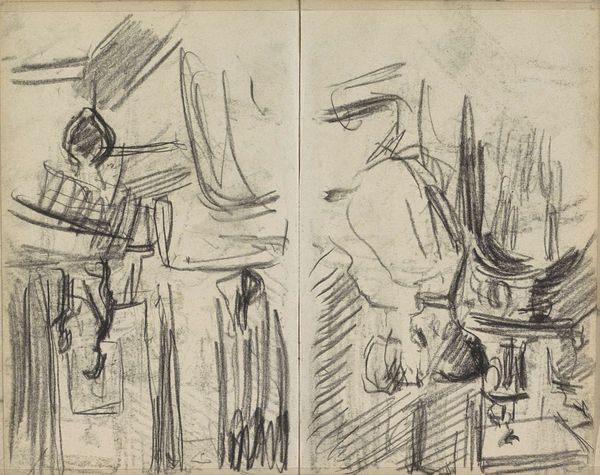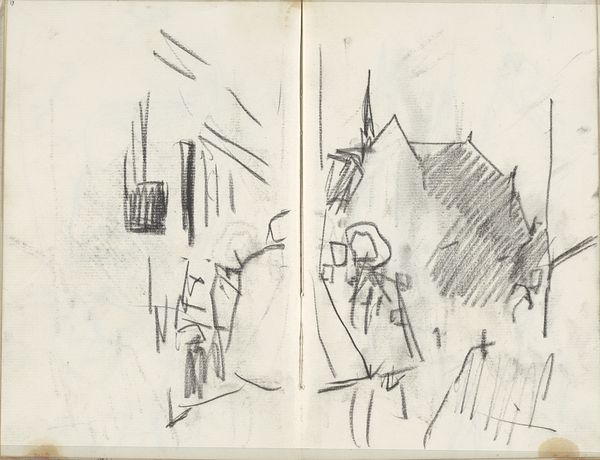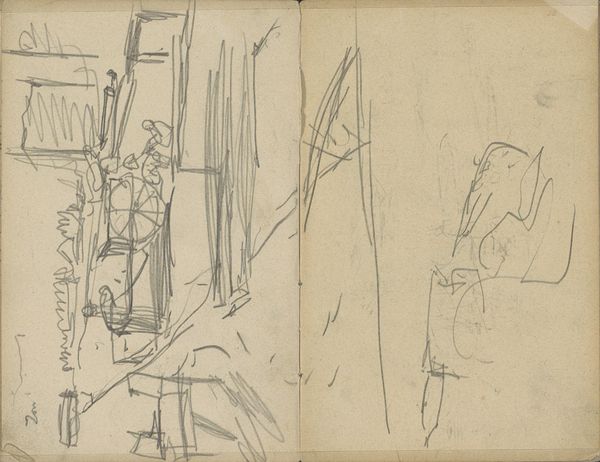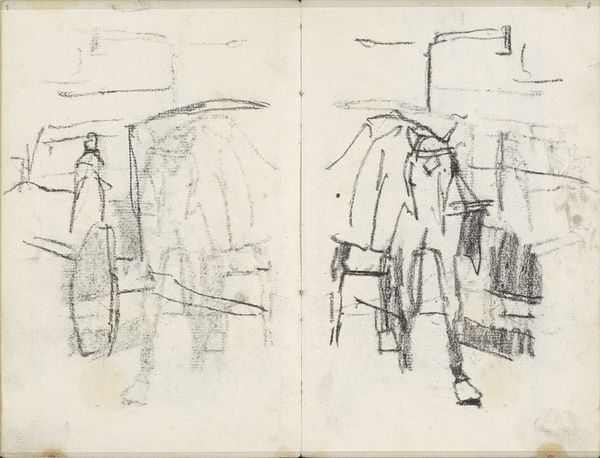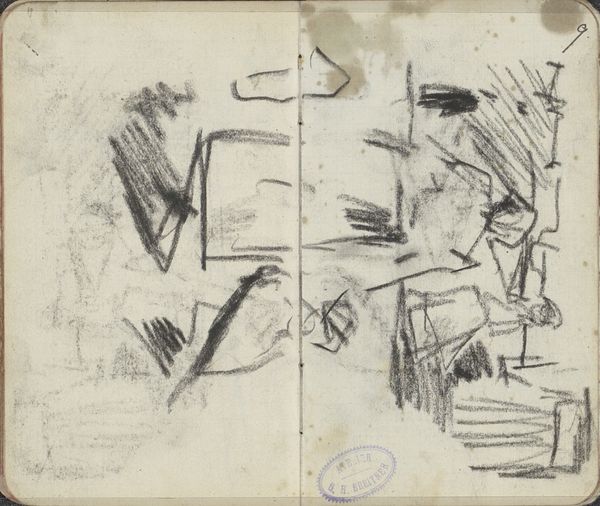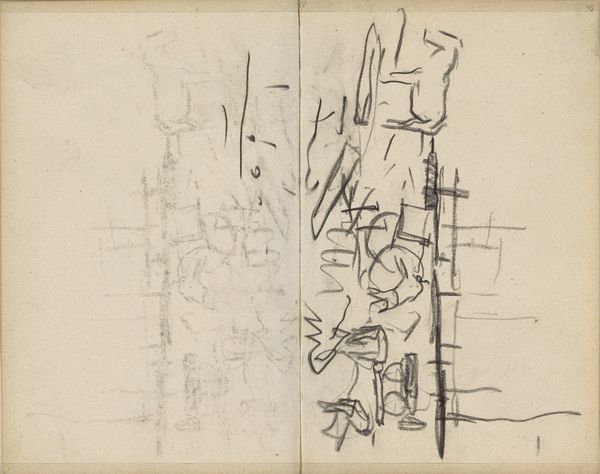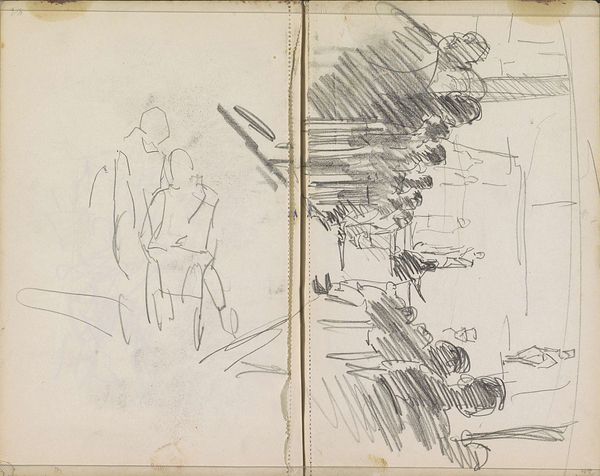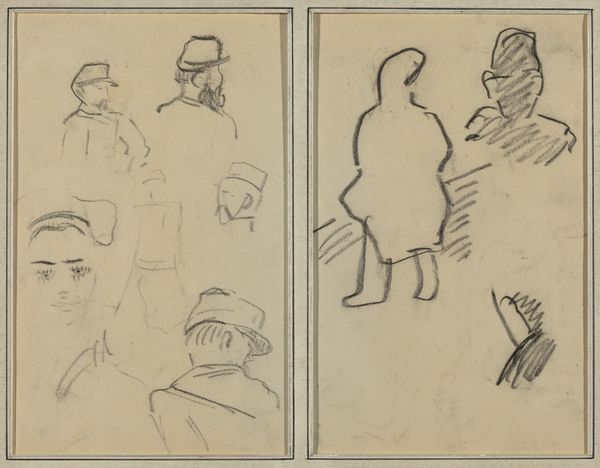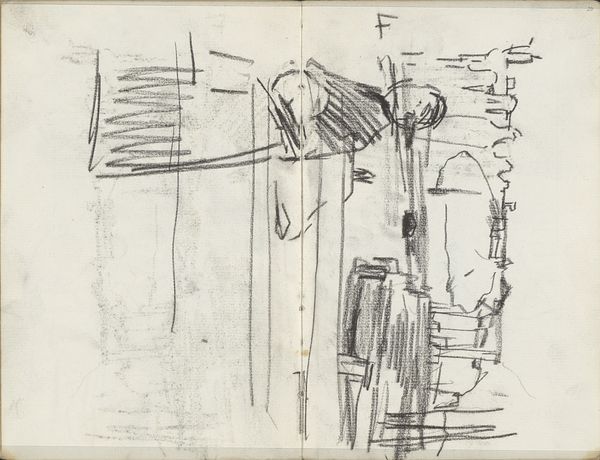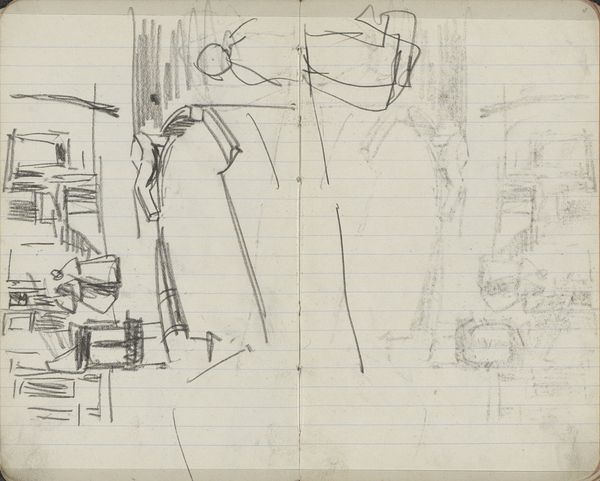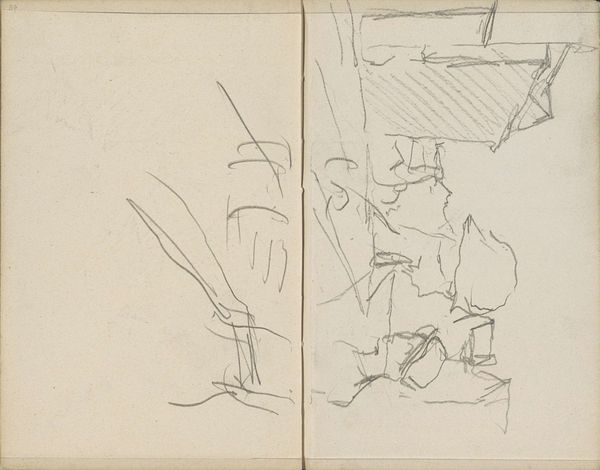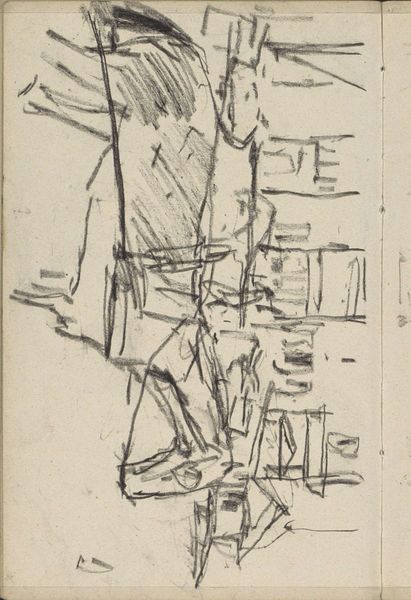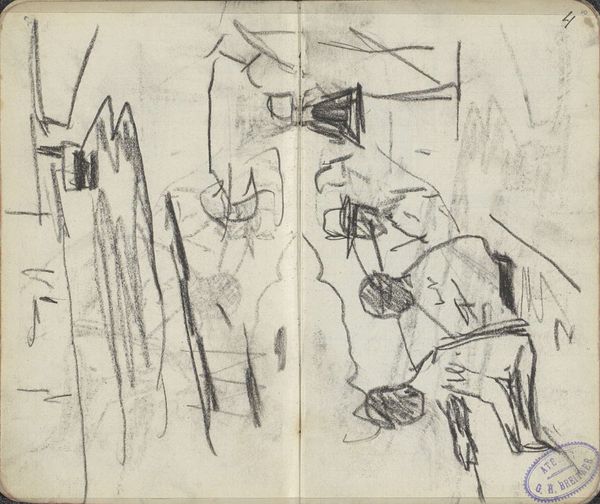
Figuren op de hoek van de Kalverstraat en de Heiligeweg te Amsterdam c. 1886 - 1903
0:00
0:00
Copyright: Rijks Museum: Open Domain
Curator: This is George Hendrik Breitner's "Figuren op de hoek van de Kalverstraat en de Heiligeweg te Amsterdam," a pencil drawing on paper from around 1886-1903. Editor: My first impression is one of bustling energy captured in these quick, restless lines. A snapshot of city life. Curator: Indeed. Breitner was fascinated by capturing fleeting moments, and here we see his commitment to portraying the raw reality of Amsterdam’s streets. Note the utilitarian nature of the materials, just pencil and paper. This allows for an immediacy that would be lost in more formal media. He’s documenting a social reality, not crafting an idealized scene. Editor: I'm struck by how the sketchy quality actually enhances the feeling of transience. The figures almost seem to vibrate. There’s something vaguely militaristic in that central figure's bearing – the uniform, the almost aggressive pose... or am I reading too much into it? Curator: I wouldn't say that's far-fetched. The late 19th century saw significant shifts in social structures and increasing militarization across Europe. This drawing acts almost as a document, attesting to those times, and consider the industrial manufacture of the pencil itself, a product of growing industrialisation, facilitating mass art production. Editor: Right, so the image may seem off-the-cuff but it speaks to wider historical trends. I find the suggestion of crowds compelling too. We don't see details, but rather types - the suggestion of human presence and activity, the social fabric. There's something enduring about this scene of daily life captured, even in a preliminary sketch. Curator: Absolutely. By choosing such a mundane subject and rendering it with such directness, Breitner elevates the everyday, hinting at the underlying structures of labour and urban existence. Editor: Well, this brief glimpse into Breitner’s Amsterdam certainly provides insight into a world that continues to resonate even today. Curator: Indeed, by examining the work through material and social lens, we can begin to piece together a far broader view of the piece's influence, context and reach.
Comments
No comments
Be the first to comment and join the conversation on the ultimate creative platform.
